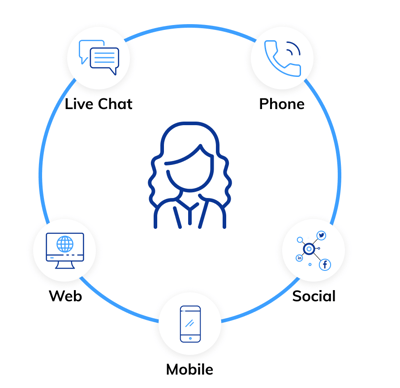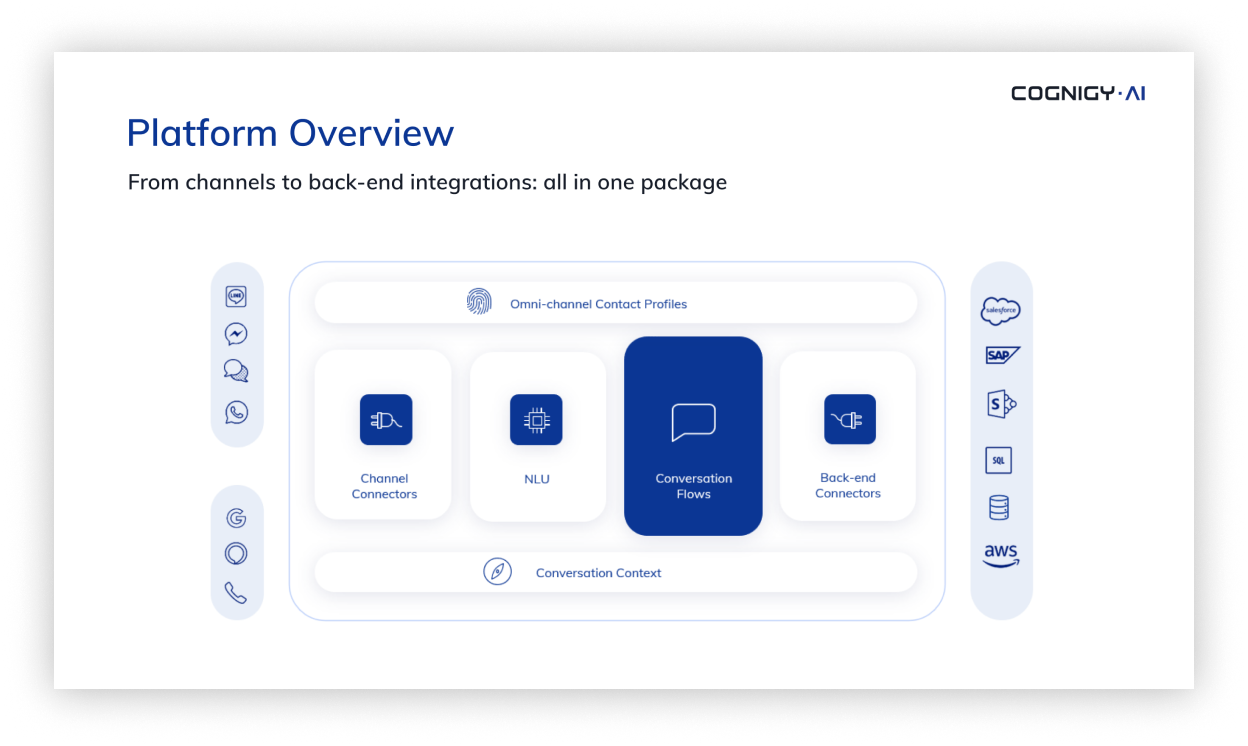We often use these two terms interchangeably, but there are some key differences between a contact center vs. a call center. Whether you’re a business owner or a customer, it’s important to understand the distinction between the two.

Both contact centers and call centers offer a way for businesses to manage customer communications, but they serve different objectives. A business may choose to deploy one or both channels depending on their needs.
Here’s everything you need to know about the difference between a contact center and a call center.
Related content:
- What is an AI Contact Center?
- Best Use Cases for AI in Contact Centers
- How Generative AI is used in Enterprise Contact Centers
- Omnichannel vs Multichannel in Contact Centers: What's the difference?
What is a call center?
A call center is an office environment where agents communicate via phone with customers or prospective customers. These centers can handle both inbound and outbound communications. They often contain two internal departments, with one team handling service and another handling sales.
Call centers have been around since the 60s when call routing software first appeared. While the infrastructure has improved, the mission of the call center remains unchanged. The goal is to provide sales support or customer service over the phone.
What is a contact center?

Evolving from the model of the call center, a contact center can also handle sales and service via phone. However, a contact center will also deal with all other forms of inbound and outbound communication.
These channels can include live chat, text, email, and social media. In the future, you can expect contact centers to support new forms of communication, as well.
As businesses strive to provide a better customer experience, contact centers have allowed them to communicate with their customers with the least friction possible. Contact centers can serve as an additional sales channel and an omnichannel resource for quick and responsive customer support.
Understanding the difference: Contact center and call center
Below, we’ve compiled the top differences between a contact center vs. call center.
1. Lines of communication
The principal difference between contact and call centers is how many different communication channels are supported. Call centers strictly deal with phone communications, whereas a contact center can provide sales and service support across every channel from one central hub.
2. Productivity
One of the primary benefits of a contact center is enhanced productivity. Phone conversations consume more resources than other lines of communication do. When customers communicate over digital channels, it’s easy for an agent to assist multiple customers at once. In contrast, in a call center, agents must focus on one customer at a time.
Live agents are a finite resource for any contact center, and savvy businesses are beginning to deploy AI to meet customer service objectives with great success.
3. Queue management
Contact centers allow for streamlined queue management compared to call centers. Since agents can have more conversations at once, managers can ensure that the workload is distributed evenly across the team.
4. Infrastructure
The infrastructure requirements of a call center vs. contact center differ significantly. Call centers typically have massive telecommunications infrastructure and hardware made for a high volume of voice calls. On the contrary, contact centers usually leverage other technologies, such as VoIP and cloud services, and those services can be accessed from anywhere.
The importance of this difference has been underscored by our current times, with many service agents working from home.
5. Self-service
The ability of these systems to offer self-service to customers also differs. With a call center, an IVR system is the only way to provide customers with a self-service portal. These systems are generally difficult to use and don’t contribute to a positive customer experience.
With a contact center, there’s a variety of ways to offer self-service to customers, including chatbots and knowledge centers. By empowering customers to solve their issues themselves, it frees up agent resources while contributing to a positive customer experience.
Which is best for your business?
Now that you’re equipped with a solid understanding of the differences between a contact center vs. a call center, you should know which system is the best fit for your business.
In some cases, a call center is a sufficient solution. However, a contact center allows for a much more holistic approach to managing your customer objectives, especially when your customers' needs are always changing. It may sound daunting to implement a contact center system at first, but with the emergence of technologies such as Conversational AI, it doesn't have to be.
Using Conversational AI in your contact center
Conversational AI is a set of technologies that combine conversations and processes, all on autopilot. In the context of a contact center, just imagine Conversational AI as a virtual agent on the frontline instead of your actual human agents. By using this technology, you can automate repetitive tasks such as answering the most common questions, troubleshooting common issues, and much more. But how does it work?

The process starts with a customer using a virtual chat option (represented on the left of the image) to engage with an agent. Meanwhile, the AI intelligently works behind the scene to understand the conversation and churn out relevant replies. This is done by leveraging natural language and machine learning models to understand sentence structure, user intents, and other important terms.
Let's take an e-commerce store as an example. An online shopper might say, “I want to see the latest collection.” The Conversational AI engine quickly jumps in to identify the intent as a “latest collection” and passes the information through the dialogue automation layer. The layer quietly engages with your backend system to retrieve the latest collection in your database.
Interested to see what Conversational AI can really do for your business? Our team of experts will be happy to demonstrate specifically for your use case.




.png?width=60&height=60&name=AI%20Copilot%20logo%20(mega%20menu).png)




